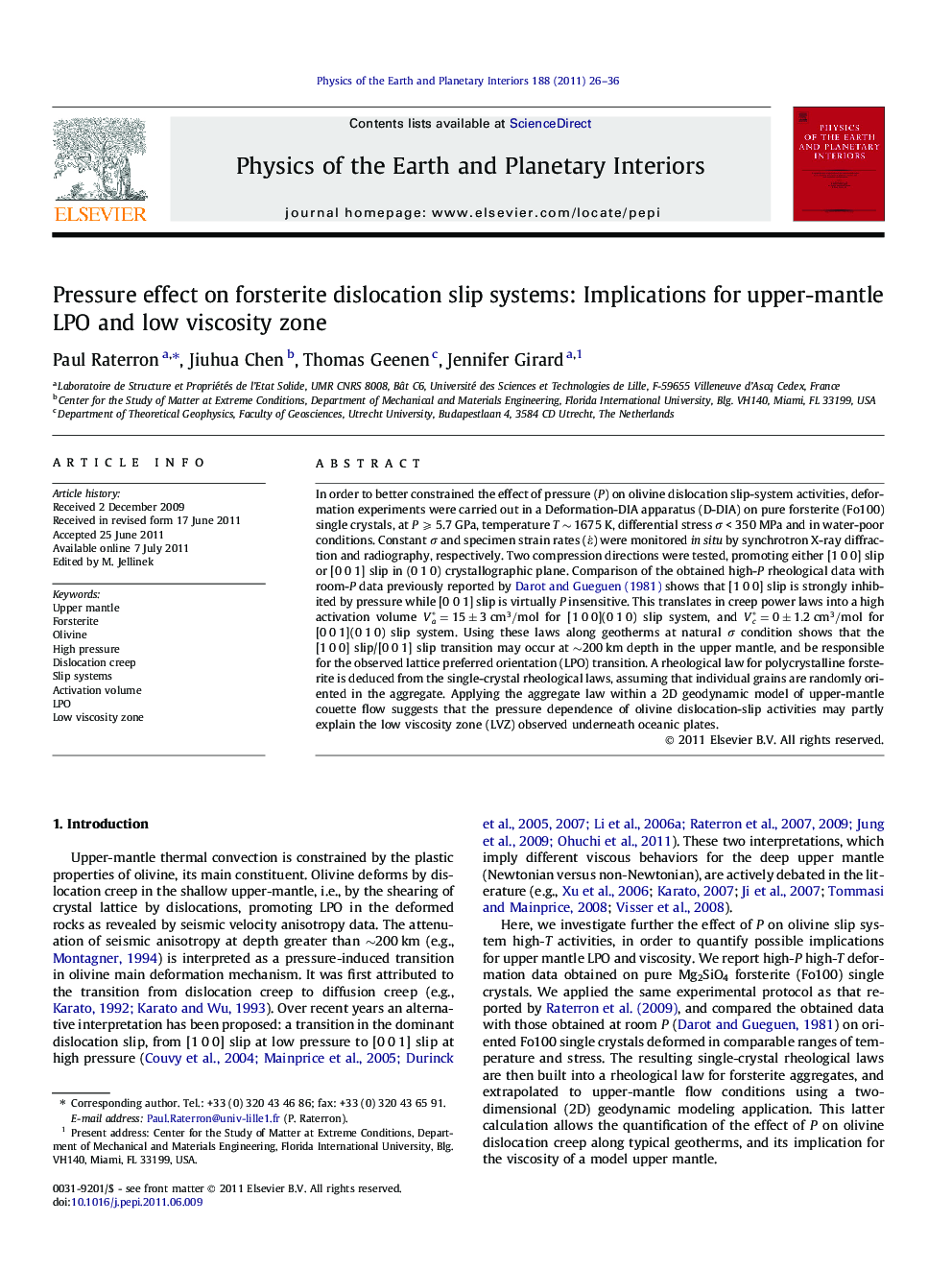| Article ID | Journal | Published Year | Pages | File Type |
|---|---|---|---|---|
| 4741927 | Physics of the Earth and Planetary Interiors | 2011 | 11 Pages |
In order to better constrained the effect of pressure (P) on olivine dislocation slip-system activities, deformation experiments were carried out in a Deformation-DIA apparatus (D-DIA) on pure forsterite (Fo100) single crystals, at P ⩾ 5.7 GPa, temperature T ∼ 1675 K, differential stress σ < 350 MPa and in water-poor conditions. Constant σ and specimen strain rates (ε˙) were monitored in situ by synchrotron X-ray diffraction and radiography, respectively. Two compression directions were tested, promoting either [1 0 0] slip or [0 0 1] slip in (0 1 0) crystallographic plane. Comparison of the obtained high-P rheological data with room-P data previously reported by Darot and Gueguen (1981) shows that [1 0 0] slip is strongly inhibited by pressure while [0 0 1] slip is virtually P insensitive. This translates in creep power laws into a high activation volume Va∗=15±3cm3/mol for [1 0 0](0 1 0) slip system, and Vc∗=0±1.2cm3/mol for [0 0 1](0 1 0) slip system. Using these laws along geotherms at natural σ condition shows that the [1 0 0] slip/[0 0 1] slip transition may occur at ∼200 km depth in the upper mantle, and be responsible for the observed lattice preferred orientation (LPO) transition. A rheological law for polycrystalline forsterite is deduced from the single-crystal rheological laws, assuming that individual grains are randomly oriented in the aggregate. Applying the aggregate law within a 2D geodynamic model of upper-mantle couette flow suggests that the pressure dependence of olivine dislocation-slip activities may partly explain the low viscosity zone (LVZ) observed underneath oceanic plates.
► Olivine deforms by dislocation creep in the top 200 km of the upper mantle. ► We quantify the effect of pressure on olivine [1 0 0] and [0 0 1] dislocation slips. ► We show that pressure inhibits [1 0 0] slip and has no effect on [0 0 1] slip. ► A [1 0 0] slip/[0 0 1] slip transition may occurs at 200 km depth in the mantle. ► Dislocation-slip pressure dependence may contribute to mantle low viscosity zone.
